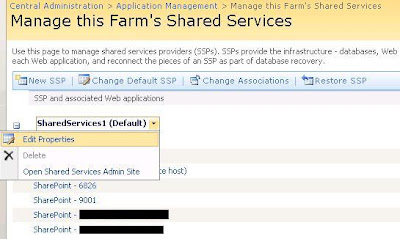We had an issue with our Index server running out of disk space. The server was old and didn't have slots available to add more storage.
The approach I took had a disadvantage that I had to do a Full Crawl again. Here are the steps I followed:
1. Setup MOSS server with all pre-requisites; do not add server to farm
Note: It is important not to install .NET Framework 3.5 SP1 on this server, please read my previous blog post for more details. It can be installed after setting up search.
2. Reset all crawled content from Central Admin. We may choose to remove the existing Index server from farm if required
3. Run PS Config wizard on new Index server and add the server to farm. If you have done a complete installation of MOSS the Web Application service and Incoming Email service would have started. Before configuring search we may choose to stop these services.
3. Start search service from Services on Server page of Central Admin - Operations and do the configuration.
4. Navigate to SSP and associate this new Index server there. This is done from Application Management - Create of Configure this farms Shared Services
5. Navigate to SSP Admin page and click on Search Settings to configure search scopes and start crawl.

Comments